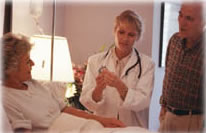|
Pityriasis Lichenoides Chronica - Causes, Symptoms and Treatment
Definition
Pityriasis lichenoides is an uncommon inflammatory disease of unknown aetiology divided into an acute and a chronic form. Pityriasis lichenoides encompasses a spectrum of clinical presentations ranging from acute papular lesions that rapidly evolve into pseudovesicles and central necrosis to small, scaling, benign-appearing papules. The condition can range from a relatively mild chronic form to a more severe acute eruption. The mild chronic form is known as pityriasis lichenoides chronica. It is characterised by the gradual development of symptom less, small, scaling papules that spontaneously flatten and regress over a period of weeks.
There are two types of pityriasis lichenoides chronica:
- A short-lived form usually found in children which is known as pityriasis lichenoides varioliformis acuta
- A more long-lasting form known as pityriasis lichenoides chronica.
Causes
- The exact cause of pityriasis lichenoides chronica is not known.
- Pityriasis lichenoides chronica can be caused by becterail. Although it is not confirmed that this is right cause but it is suspected to be one.
- Environment may also be a cause of pityriasis lichenoides chronica.
- There may be some link of this disease to some kind of viruses, vaccines and other illness especially skin diseases.
- The reaction of over-sensitiveness to the infectious agents is the principal cause of this disease.
- An immune-complex-mediated hypersensitivity vasculitis can also thought of as cause.
Symptoms
- Initially a small pink papule occurs that turns a reddish-brown color
- A general centripetal eruption of 0.5- to 2-cm rose- or fawn-colored oval papules and plaques follows within 7 to 14 days.
- The lesions have a scaly, slightly raised border and resemble ringworm.
- The spots look less angry and are covered with a firm shiny scale.
- They are not very irritating to the individual, but if it does becoming itching, it is important not to scratch them as they could be infected.
- The symptoms of fever and headache may be seen.
- The rash can last for a few weeks to a couple of months, and usually disappears entirely within one to two years.
- Papules may dominate with little or no scaling in blacks, children, and pregnant women.
Treatment
- The disease can be controlled but not cured.
- Infected lesions may be treated with topical mupirocin and sterile dressing changes twice daily.
- Sun exposure may help to resolve lesions but sunburn should be avoided.
- Steroids are very useful in treatment of pityriasis lichenoides chronica. But this have a number of side effects associated with them. So, these should be used carefully and with right prescription.
- Topical immunomodulators such as tacrolimus or pimecrolimus. Tacrolimus ointment applied twice daily has been used successfully to treat patients with pityriasis lichenoides chronica.
- Corticosteroid creams and ointments applied to the skin often control the rash and itching.
- Lamps that produce different wavelengths of ultraviolet light i.e. UVA and UVB are both useful. PUVA has a greater effect on the skin, but carries a higher risk of side effects.
|
|





